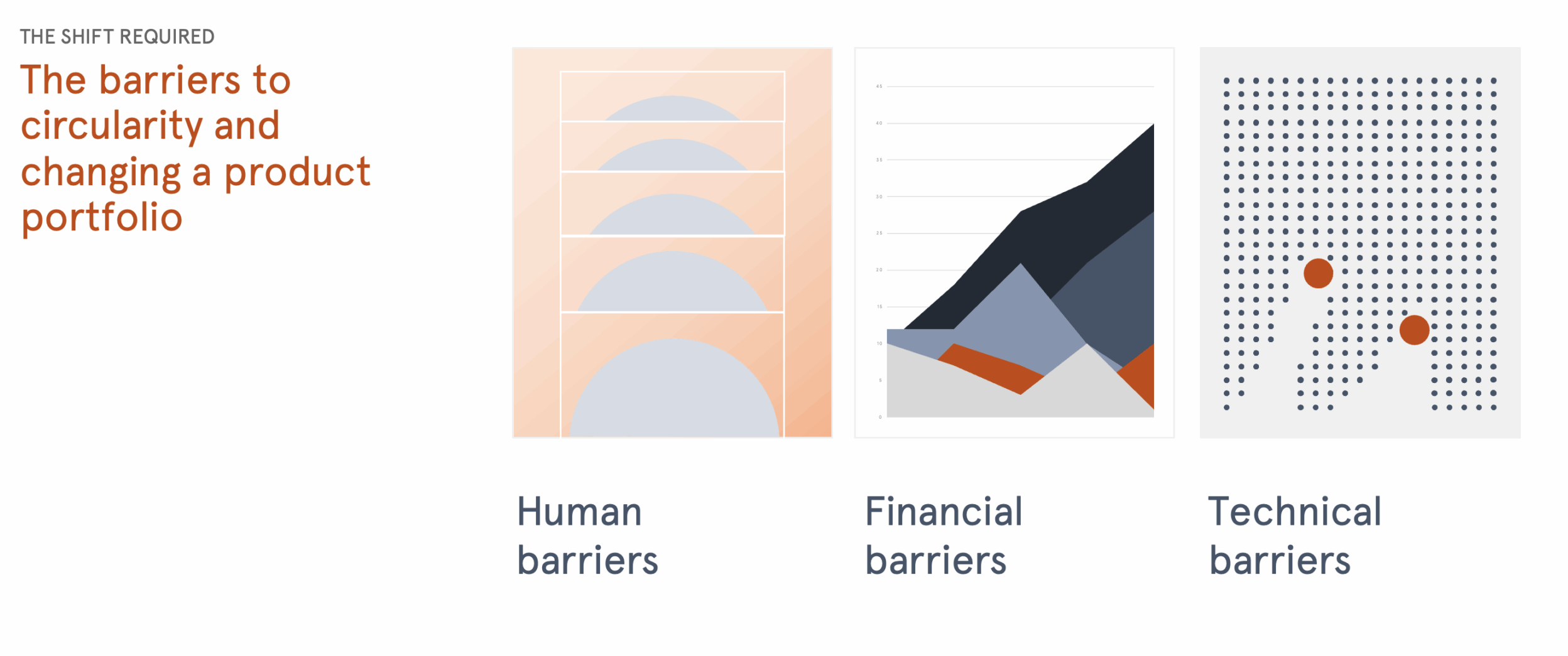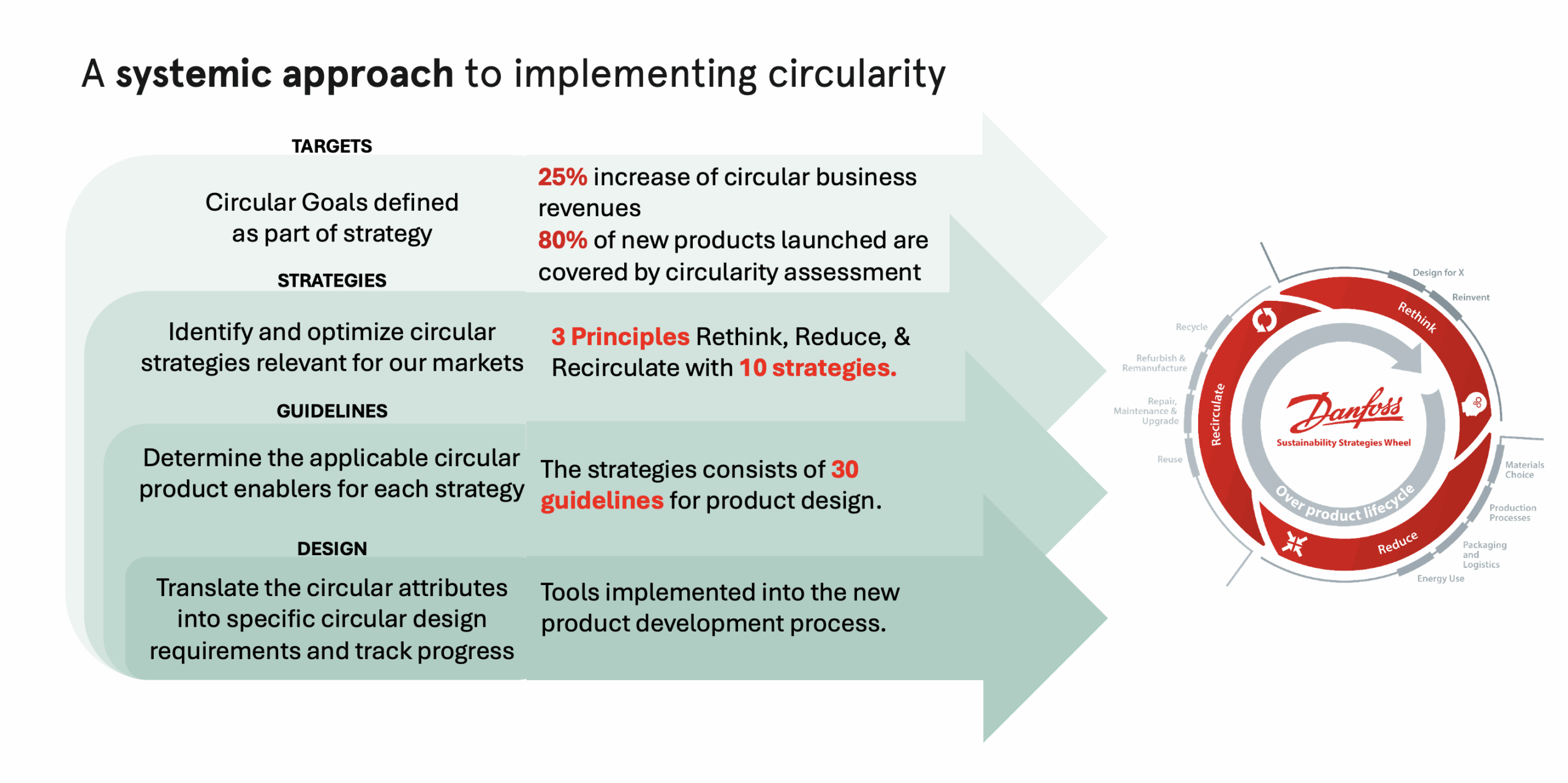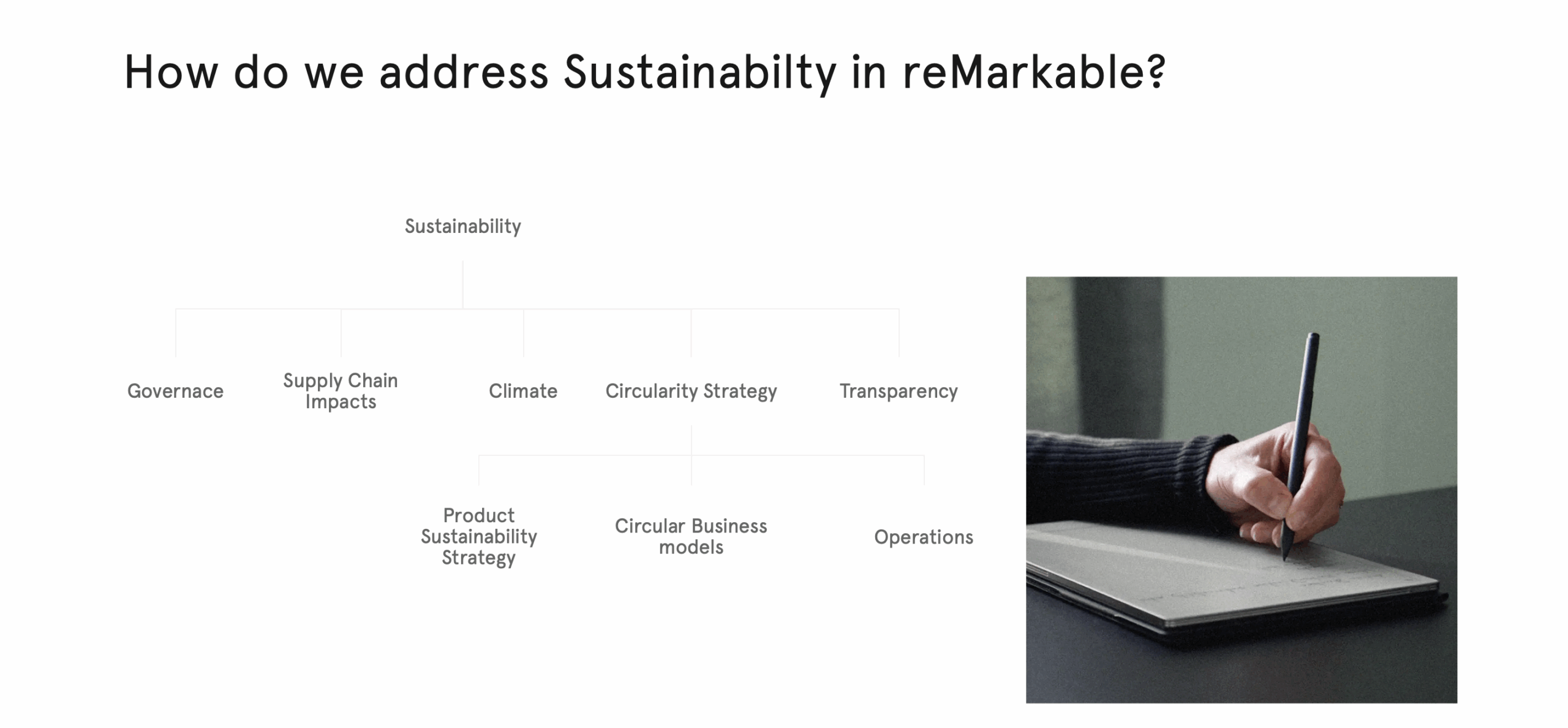On September 9th, 2025, Nordic Sustainability brought together leading sustainability experts to examine how circularity is becoming essential for business resilience and competitiveness.
The panel featured Lina Psarra, Circularity and Sustainability Lead at Danfoss, Magnus Gravem, VP of Sustainability at reMarkable, Minna Shukri, Associate Team Lead on Climate and Circularity at Nordic Sustainability and Sven Beyersdorff, Managing Partner at Nordic Sustainability. Together, they explored the strategic relevance of circularity and shared practical approaches for embedding it across organisations.
Understanding the urgency
Minna Shukri opened the session with a data-driven overview of the current state of circularity. Global circularity has declined, while net-zero targets are being delayed and supply chains are increasingly vulnerable to geopolitical situations. The European Union has taken notice and is accelerating regulatory frameworks around material efficiency and decarbonisation (the Clean Industrial Deal, the Critical Raw Materials Act).
For businesses, this shifting environment represents, on one hand, a risk and pressure, and on the other, an opportunity. The opportunity lies in positioning circularity as a critical competitive advantage that drives business resilience, amplifies resource productivity, and ensures regulatory compliance.
Barriers to progress
Despite its strategic importance, implementing circularity faces three interconnected challenges:

Human
Circularity requires cross-functional collaboration within the organisation, with suppliers, and with the customer base. Without internal and external alignment, efforts remain fragmented and ineffective.
Financial
On the financial barriers we need to explore and expand new markets for new circular product portfolios. Additional to this, circular strategies often demand a significant upfront investment and longer timespan for delivering on financial gains, hence the need for patient investment (traditional funding models may not be sufficient).
Technical
Innovation in design, materials, and systems is essential. However, technical progress depends on solving human and financial barriers first. To be truly effective, innovation must also enable closed-loop systems that design out waste from the start.
Danfoss: practical strategies for implementation
Lina Psarra outlined Danfoss’s structured pathway to circularity, anchored in three core principles: Rethink, Reduce, and Recirculate. These are, in turn, supported by 10 strategies and 30 practical design guidelines.

Notable measures include integrating circular design criteria into 80% of new products by 2030, targeting a 25% increase in circular business revenues, and piloting take-back programs such as thermostat recycling in Denmark.
The company has embedded circularity throughout its innovation process using tools like the Danfoss Circularity Index (DCI), carbon footprint calculators, and sustainable packaging assessments.
Lina highlighted the importance of internal ambassadors and cross-segment collaboration: “Change management really worked. We started from zero, and now nearly half of our launched products have undergone circularity assessments with improved performance measures.”
reMarkarble: advancing longevity as a strategy
Magnus Gravem outlined reMarkable’s holistic strategy covering the entire product lifecycle, from responsible sourcing through end-of-life recovery. Their approach combines circular business models (leasing, modular design), governance and transparency structures, and supply chain assessments. This approach is underpinned by a strong dependency on their value chain, with KPIs, measures, and targets in place for suppliers all the way to Tier 3, ensuring alignment and accountability across the full lifecycle.

At the heart of this approach is a commitment to longevity, which Magnus described as the key to unlocking circularity at scale. “We call it consumer electronics, but what if we shifted to user electronics?” he asked, reframing the narrative from disposability to stewardship. reMarkable’s latest product, the Paper Pro Move, exemplifies this philosophy: it is engineered for repairability, with only six components that cannot be reused, and designed to support multiple life cycles.
Key takeaways for actionable change
- Start with the data you already have and build momentum with practical steps
- Link circularity initiatives with financial & operational outcomes to secure leadership buy-in
- Apply structured tools to benchmark performance and identify new opportunities
- Invest in internal capacity-building and cross-functional collaboration
Ready to begin your circularity journey?
At Nordic Sustainability, we support organisations in transforming circularity into a competitive advantage. To learn more, reach out to our Associate Team Lead on Climate and Circularity, Minna Shukri, msh@nordicsustainability.com.

Interested in learning more about circularity?
Explore how the EU’s sustainable product regulation is shaping circularity and guiding organisations toward future-ready business practices.





